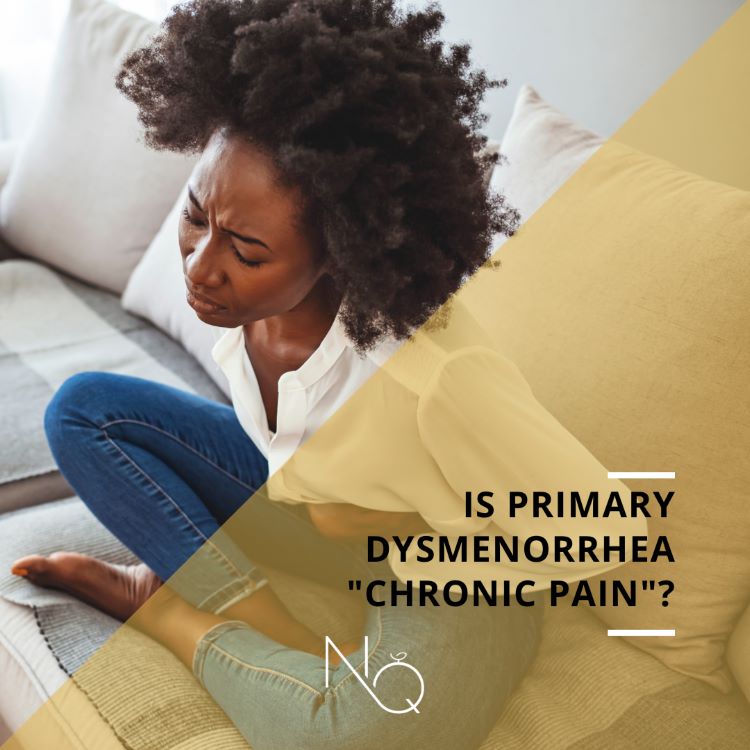What is primary dysmenorrhea? What does chronic pain mean, and how does it affect people's bodies? Can primary dysmenorrhea be considered chronic pain?
What is primary dysmenorrhea?
Dysmenorrhea is the severe and painful cramps originating in the uterus and occurring during menstruation. We call it primary when no underlying pathological condition causes it, meaning we do not have a health problem leading to severe period pain. Dysmenorrhea can often be intense and unbearable, even if we think this is normal. Dr. John Guillebaud, Professor of Reproductive Health at UCL likened the pain of dysmenorrhoea to the pain experienced by a person having a heart attack, except that the former lasts for hours or days! In this way, he made people who do not have periods more aware of how important it is to treat severe dysmenorrhoea. The question is this: can dysmenorrhea affect people beyond the obvious outcomes (like change in daily routine, being bedridden, mood swings, absence from school or work)? That is, how persistent period pains can affect the functioning of our body?
What is chronic pain?
Chronic pain refers to pain that lasts for more than 12 months, regardless of medication or treatment. People who have had an accident or surgery or are chronically ill (e.g. diabetes, arthritis, irritable bowel syndrome, etc.) might often experience chronic pain. It appears that, due to pain, people have changes in their bodies compared to people who do not suffer from chronic pain. These people have three characteristics. Firstly, they have altered responses by the central nervous system to an external pain stimulus; 2. dysfunction of the hypothalamic-pituitary-adrenal axis; 3. reduced quality of life. In simpler words, No.1 measures a person's reaction to an external pain stimulus, like when a hot object touches them, or we pinch them, etc., which is different in people with chronic pain compared to healthy people. No. 2 measures the stress hormone cortisol in the body, which is lower than expected in people with chronic pain. Finally, the quality of life on a physical and mental level is also lower.
Is primary dysmenorrhea chronic pain?
Primary dysmenorrhea is not categorized as chronic pain by official organizations. However, a study done at the University of Oxford in the United Kingdom revealed that although dysmenorrhea is not considered chronic pain, the women who suffered from it met some of the criteria for chronic pain mentioned above. These women exhibited excessive pain after thermal stimulation, reduced quality of life on a physical but not mental level, and low cortisol levels. The stronger and longer the period of pain, the more pronounced these observations were. These measurements apply to various points in the menstrual cycle and not just the days of the period. These data underline the importance of early and adequate treatment of primary dysmenorrhea.
Conclusions for primary dysmenorrhea
I did not need to study an article to understand that primary dysmenorrhea has numerous effects on the daily life and the body of women. Although it is not officially considered chronic pain, we should treat it. Even if we have learned to endure the pain because that is how we know, it is good to distinguish the following: the period is an important indicator of health and something completely normal to happen to us, but the pains that make us suffer are not ok. We ask for advice from our gynecologist, nutritionist, and personal trainer to deal with the pain more effectively. We inform those around us if we need to withdraw for a little while until the pain passes and we feel well again. Finally, we do our self-care routine to relax.
BIBLIOGRAPHY
Vincent K, W.C., Stagg CJ, Moore J, Kennedy S, Tracey I, "Dysmenorrhoea is associated with central changes in otherwise healthy women". Pain, 2011. 152(9): p. 1966-75.




